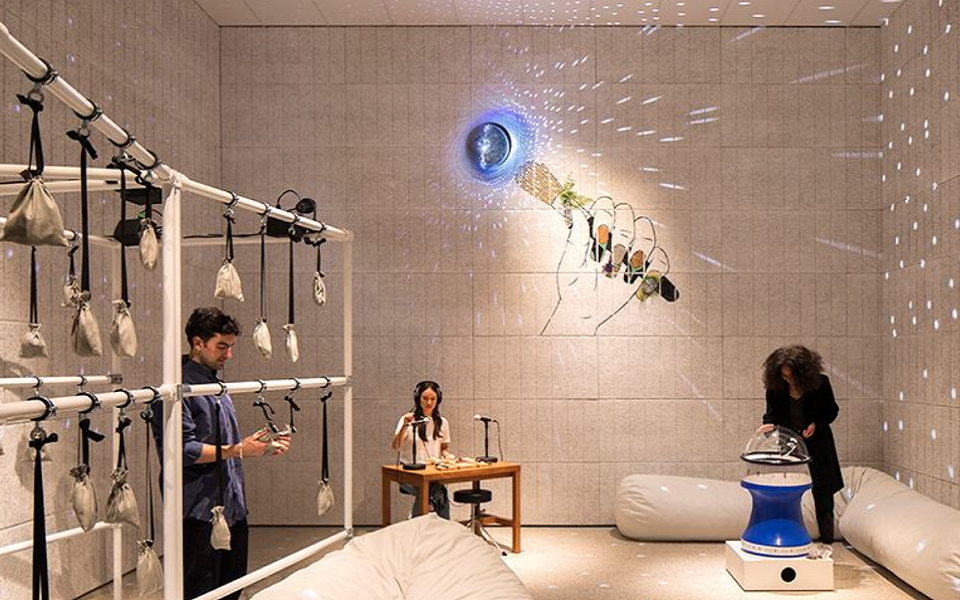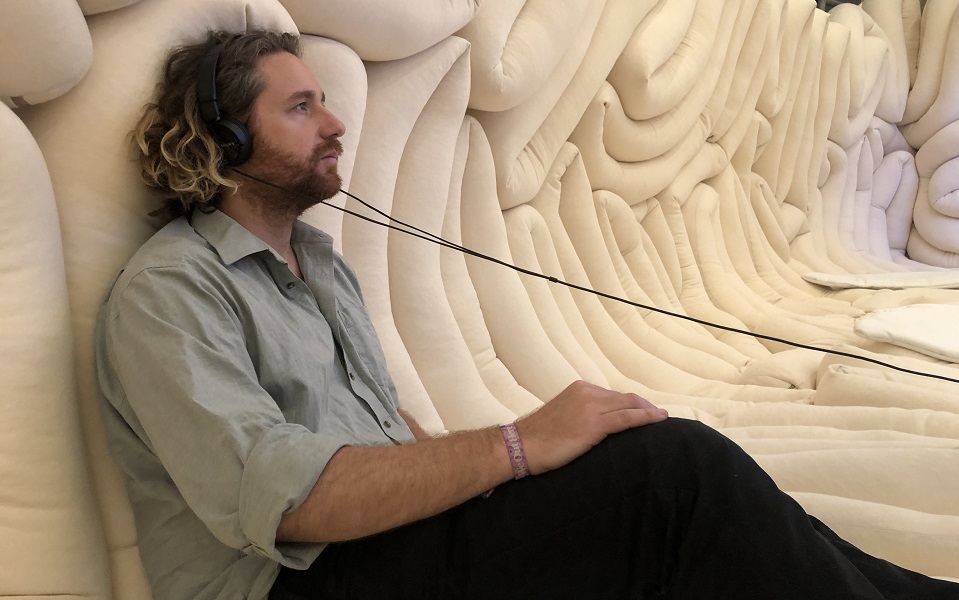ASMR you listening? Design Museum’s new exhibition brings ASMR IRL

To give some idea of the seismic level of popularity around ASMR, the most-watched YouTube video on the topic has earned four times the amount of views as Netflix’s most-watched film ever. In it, performer Hongyu eats jellied sweets and the sound of her eating them has racked up 332m views.
ASMR – short for autonomous sensory meridian response – is the practice of listening to sounds, sometimes with visuals, and feeling a deep sense of calm, and sometimes a tingling sensation in the body. Online searches skyrocketed in 2020, with research published by SEMRush showing a rise of 22%.
This month, the UK’s first ASMR exhibition opens at Kensington’s Design Museum, offering immersive experiences with sound. Guests can hear their claps echoed from tens of speakers in a curtained studio space, rub make-up brushes against speakers and caress lumpy-bumpy objects with headphones on to see whether they think ASMR is worth the hype.

The focal point of the exhibition is an immersive cocoon-shaped pillowy space comprised of 800 metres of soft tubing. Guests remove their shoes and bed in to watch a collection of ASMR videos with private headphones. One shows a worker meticulously stitching a Eurovision dress as it noisily crunches on the table.
“It’s probably the only exhibition in London where the biggest compliment is you take a nap,” says James Taylor-Foster, curator of Weird Sensation Feels Good: The World of ASMR. Taylor-Foster remembers waking up an elderly couple, asleep hand-in-hand, when the first iteration of the museum opened in Stockholm.
“ASMR is subverting the speed of our smart phones, of our proximity to world events, and carving out a niche in slowness, softness, gentleness,” says Taylor-Foster. Visitors can partake in an ASMR survey helping academics build a cohesive picture of ASMR, with the hope that they can build a scientific case for the unexplained feels. But for Taylor-Foster, the exhibition is more about celebrating the cultural weight of the movement.

“Like any movement that comes from nowhere and galvanises and becomes trans national and trans cultural and trans lingual, there’s clearly something very human happening here,” says Taylor-Foster. “My argument is we all need softness. That’s inbuilt into us from babies, we’re squishy things moving through this sharp world.”
That ASMR is inherently reliant on technology to conjure feelings is an “irony”, says Taylor-Foster, but as technology becomes more closely intertwined with our lives, ASMR may be the soft new face of the internet, the sympathetic arm of the web with the ability to enhance our lives without making us feel stressed or over-stimulated. “We’re moving in this direction through wearables,” says Taylor-Foster.
The exhibition looks backwards too, with an ode to the ‘Godfather’ of ASMR, American painter Bob Ross, whose gentle, hypnotic painting shows on TV from the 1980s and 1990s are seen as precursors for the ASMR age. “Brushing a canvas, that’s a trigger, that satisfying thing of completing a canvas, that’s a trigger, but he’s also triggering you through soft spoken words, positive affirmations,” says Taylor-Foster.
The exhibition makes ASMR feel accessible to those that haven’t experienced it online, but there’s the greater sense it is also gently posing a bigger question about the potential of the movement. A 2015 study showed it can help relieve negative mood symptoms such as depression and stress, for instance. “What happens if ASMR could be clinically produced, and be offered as a complimentary treatment for an anxiety disorder so it’s part of a doctor’s toolbox?” asks Taylor-Foster.
“That question of what is happening to our bodies, our brains, is being explored. If nothing comes out of it, it’s still a cultural movement that is helping people. Maybe that’s enough?”
Regardless of a cohesive scientific picture, perhaps its greatest strength is how easy it is to try out. The 2015 study also revealed 75 per cent of participants felt a tingling feeling when listening to whispering – and the tension certainly went from my shoulders after hearing the gently caressing voices, and scratching, tapping and page-turning sounds at the exhibition.
“When you leave, you might hear the birds singing,” surmises Taylor-Foster. “Maybe it helps you understand that we live in a multi sensorial world – a lot of things in the world that we engage with, like the podcasts we listen to, are isolating us.”
Weird Sensation Feels Good: The World of ASMR is on at the Design Museum until 16 October
